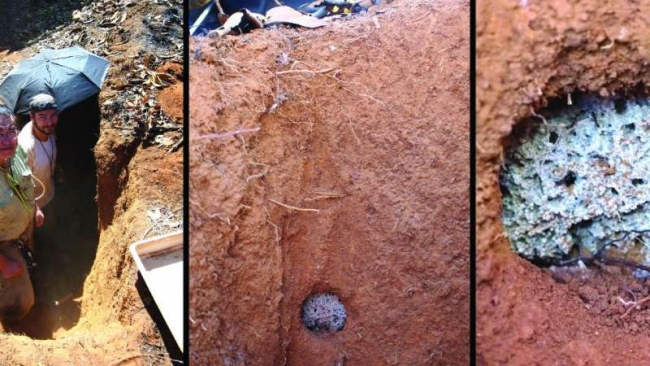Ant agricultural revolution began 30 million years ago in dry, desert-like climate

Millions of years before humans discovered agriculture, vast farming systems were thriving beneath the surface of the Earth. The subterranean farms, which produced various types of fungi, were cultivated and maintained by colonies of ants, whose descendants continue practicing agriculture today.
About 250 species of fungus-farming ants have been found in tropical forests, deserts and grasslands in the Americas and the Caribbean, and these species fall into two different groups based on the level of complexity of their farming societies: lower and higher agriculture. All farming ants start new fungal gardens when a queen's daughter leaves her mother's nest to go off and found her own nest, taking with her a piece of the original colony's fungus to start the next colony's farm.
In the lower, primitive forms of ant agriculture—which largely occur in wet rain forests—fungal crops occasionally escape from their ant colonies and return to the wild. Lower ants also occasionally regather their farmed fungi from the wild and bring them back to their nests to replace faltering crops. These processes allow wild and cultivated fungi to interbreed and limit the degree of influence the lower ants have over the evolution of their crops.
Wed 12 Apr 2017 at 11:47




.png)
.png)